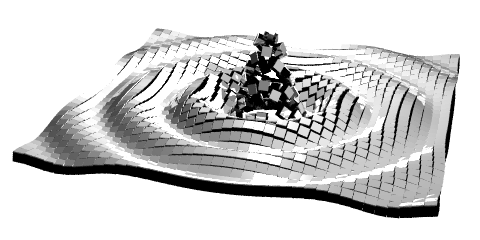Conversation:
Notices
-
Former Bob Jonkman -- Please use the new server at https://gs.jonkman.ca (bobjonkmanformer)'s status on Saturday, 04-Feb-2017 17:46:04 EST  Former Bob Jonkman -- Please use the new server at https://gs.jonkman.ca
Former Bob Jonkman -- Please use the new server at https://gs.jonkman.ca
Remind me of the math. How much current can you pull from a 22000uF capacitor with 64V on it? -
Stephen Sekula (steve)'s status on Saturday, 04-Feb-2017 17:53:45 EST  Stephen Sekula
Stephen Sekula
The current will be given by I = I_0 (1-e^{t/(RC)}), where I_0 is the maximum current that can be delivered by the capacitor when it's discharged at time zero. So the current maximum will depend on not just C, but the resistance in the circuit. What's the resistance? -
Stephen Sekula (steve)'s status on Saturday, 04-Feb-2017 17:54:14 EST  Stephen Sekula
Stephen Sekula
CORRECTION: I = I_0 e^{t/(RC)} -
Stephen Sekula (steve)'s status on Saturday, 04-Feb-2017 17:55:42 EST  Stephen Sekula
Stephen Sekula
And you'll also need Ohm's Law, since V_0 = I_0 R will give you the voltage-current relationship at time zero, when V_0 = 64V. -
Stephen Sekula (steve)'s status on Saturday, 04-Feb-2017 17:57:31 EST  Stephen Sekula
Stephen Sekula
Oh, and C=22,000uF. -
Stephen Sekula (steve)'s status on Saturday, 04-Feb-2017 19:52:56 EST  Stephen Sekula
Stephen Sekula
Thanks for a fun distraction tonight, @nybill and @bobjonkman! Attached is a calculation using some of the RC equations that, given the original post, estimates the resistance through which charge in the capacitor leaked over the 8 days and 1.5 hours it was sitting. Enjoy! https://chirp.cooleysekula.net/attachment/21662 -
Former Bob Jonkman -- Please use the new server at https://gs.jonkman.ca (bobjonkmanformer)'s status on Saturday, 04-Feb-2017 20:20:15 EST  Former Bob Jonkman -- Please use the new server at https://gs.jonkman.ca
Former Bob Jonkman -- Please use the new server at https://gs.jonkman.ca
@steve@chirp.cooleysekula.net That's a lovely analysis! If the leakage could be due to the dielectric's resistance, wouldn't the observed leakage be due to *both* that and the leakage through air? Then the calculated resistance would be that of dielectric and air in parallel... -
Former Bob Jonkman -- Please use the new server at https://gs.jonkman.ca (bobjonkmanformer)'s status on Saturday, 04-Feb-2017 20:31:17 EST  Former Bob Jonkman -- Please use the new server at https://gs.jonkman.ca
Former Bob Jonkman -- Please use the new server at https://gs.jonkman.ca
And to answer my own question, with R=3.8E7 then the current at the start was 30V/R = about 0.8 uA, and at the end 13V/R = about 0.3 uA -
Stephen Sekula (steve)'s status on Saturday, 04-Feb-2017 22:27:04 EST  Stephen Sekula
Stephen Sekula
Exactly. After seeing that picture, I suspect the culprit is the dielectric inside the capacitor, as there is so much surface area tucked into that cylinder and, with age, I am sure the dielectric is more leaky than it was originally - though I am sure it's always been leaky. Still, 8 days and it only lost about half its stored charge... not bad!
-
